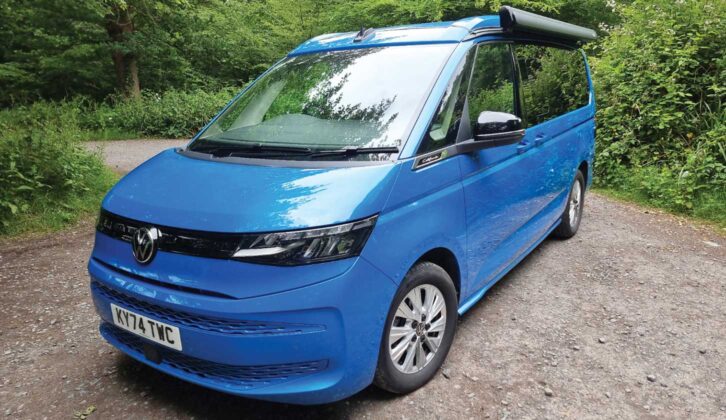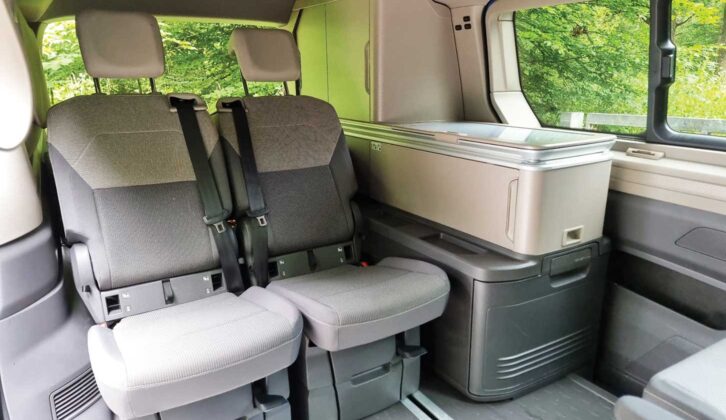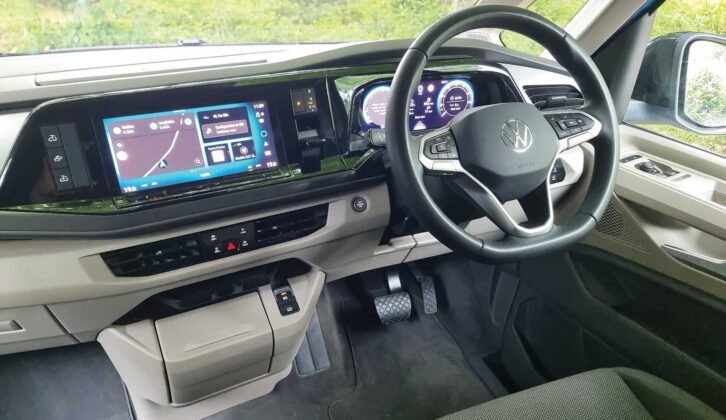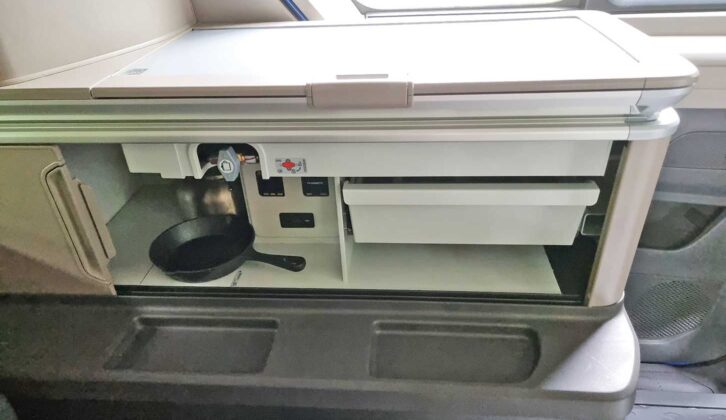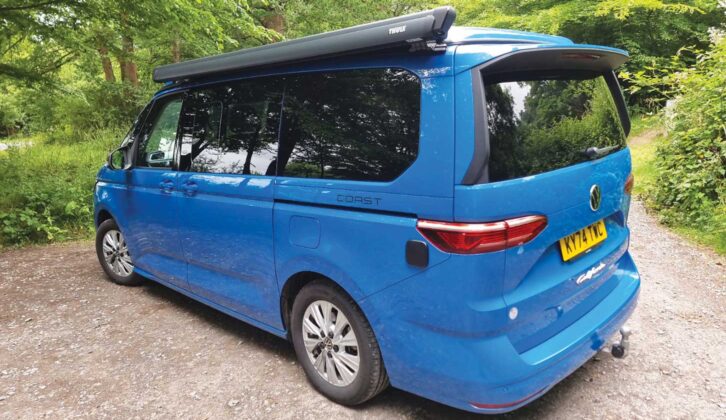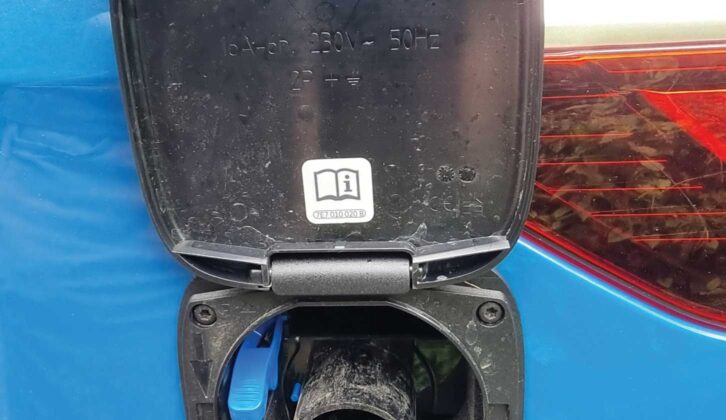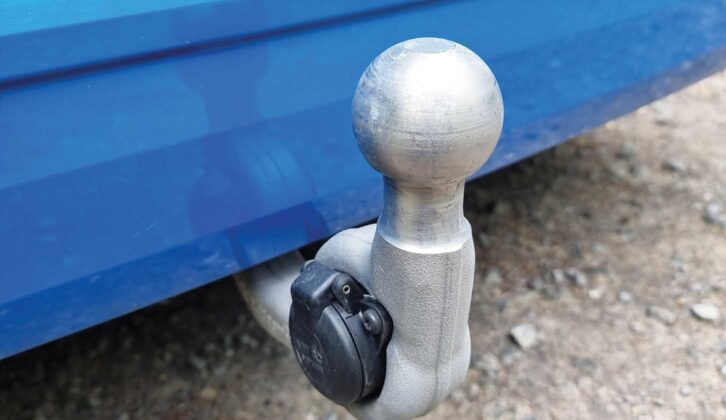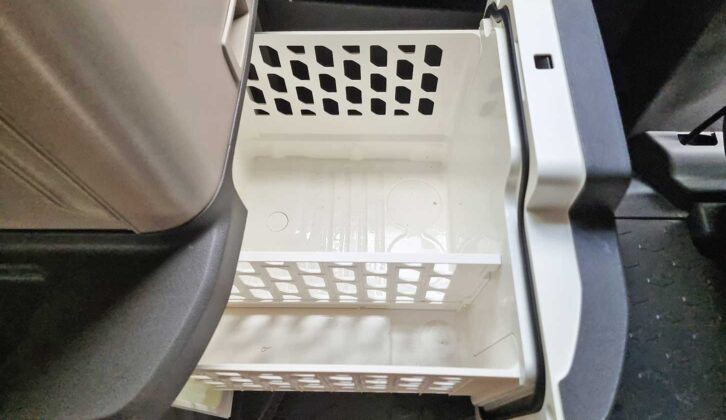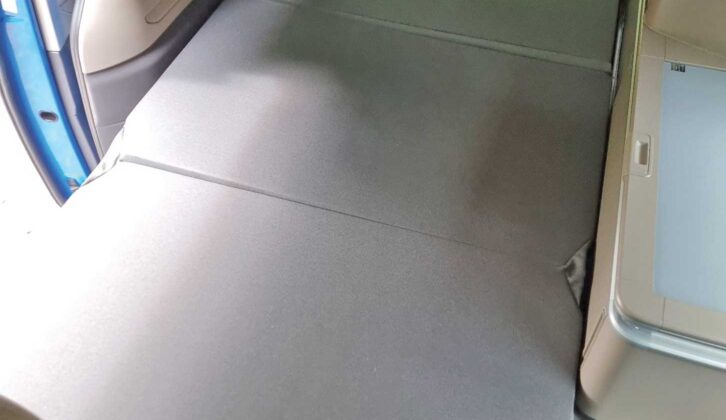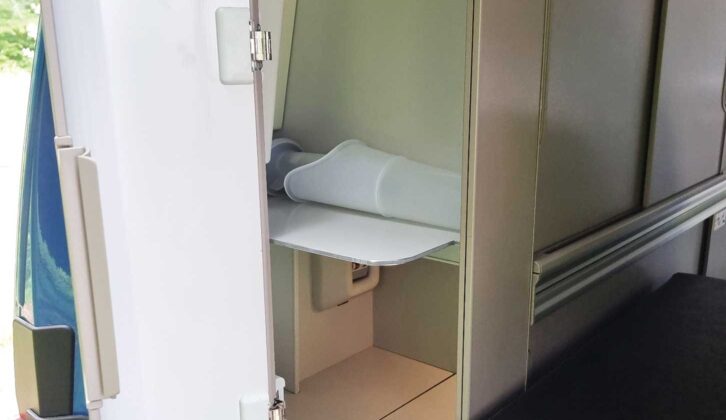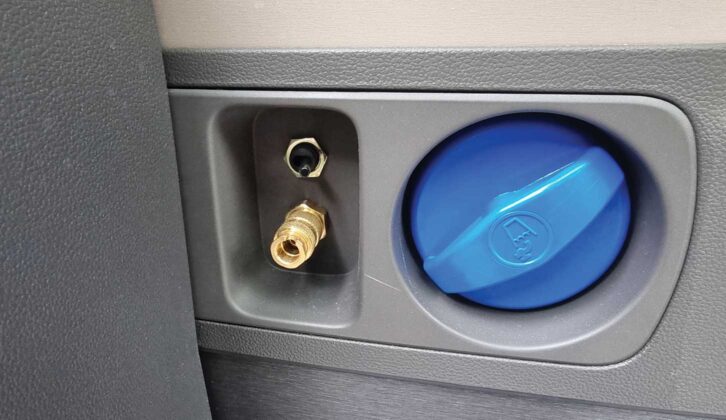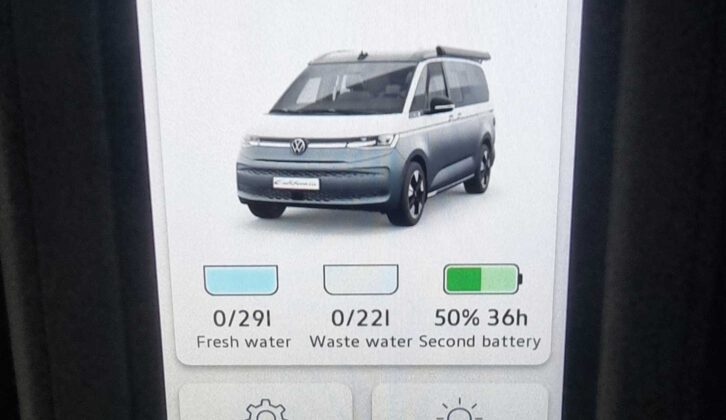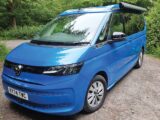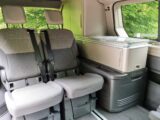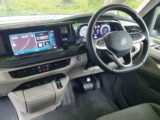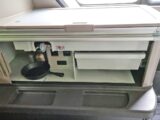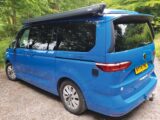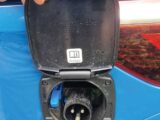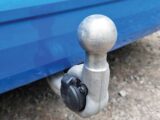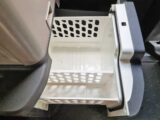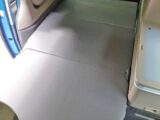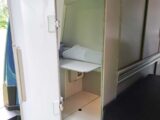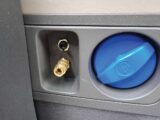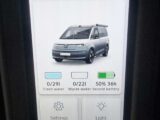Verdict
The latest California’s greatest strengths are the way it drives and the double sliding doors. If you can live with the basic kitchen, this is an impressive campervan that could easily double up as a family car.
Pros
- Twin sliding doors
- Drives well
Cons
- Basic kitchen
- No washroom
For some customers, the best camper vans will always be a VW. For decades, Volkswagen has offered its own camper to compete against the independents.
VW has taken a different approach with the latest version of the hugely popular California: instead of being based on a commercial vehicle, it uses the Multivan MPV as a starting point. It’s a smart move, as the Multivan drives well, as you would expect from a VW campervan, and is available with diesel, petrol or plug-in hybrid power.
The petrol is pacey and the plug-in offers emission-free driving on short journeys, but the diesel I’ve tested offers excellent economy and range.
Driven almost 500 miles from Surrey to Scotland, the California returned 49.7mpg – an improvement on the official figure of 41.5mpg. With a 58-litre fuel tank, 500-600 miles should be possible between fill-ups.
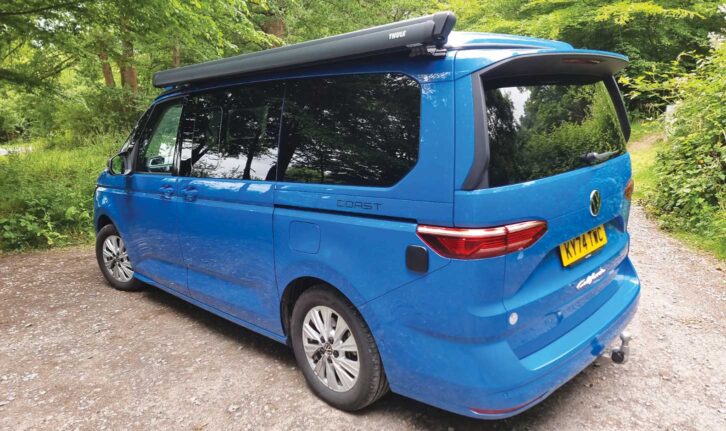
Volkswagen is a reliable base vehicle manufacturer, having been voted the Best New Base Vehicle at our 2025 Owner Satisfaction Awards 2025. Here, the Multivan is a step up on the previous California’s Transporter, offering a comfortable ride, a tight turning circle, and little noise at speed.
The cab and living area in the Volkswagen California Coast
The driver and front-seat passenger sit up high in the California. I found the seats comfortable on my trip to Scotland – no aches and pains.
As you’d expect, the dashboard has been lifted from the California’s MPV sibling. It’s solidly screwed together, with a prominent 10-inch colour infotainment system. Smartphone users can mirror their phones using Apple CarPlay or Android Auto.
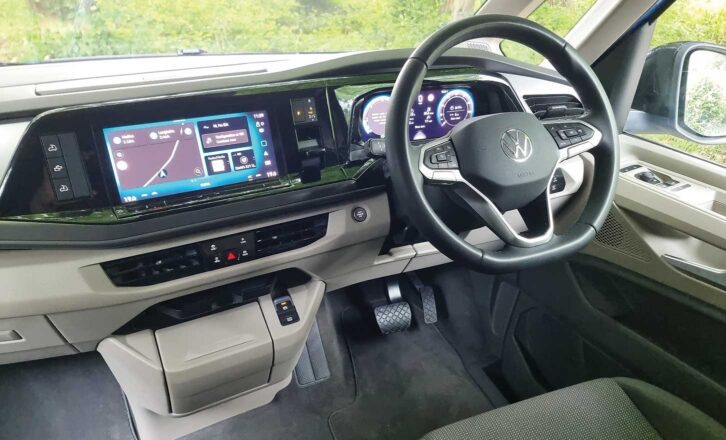
The gear lever is mounted on the dash, which leaves the space between the seats clear for walking through to the living area. Once you’ve parked up, both front seats can be swivelled easily without opening the doors.
The two belted rear seats are set on runners, so you can move them closer to the front seats or push them back.
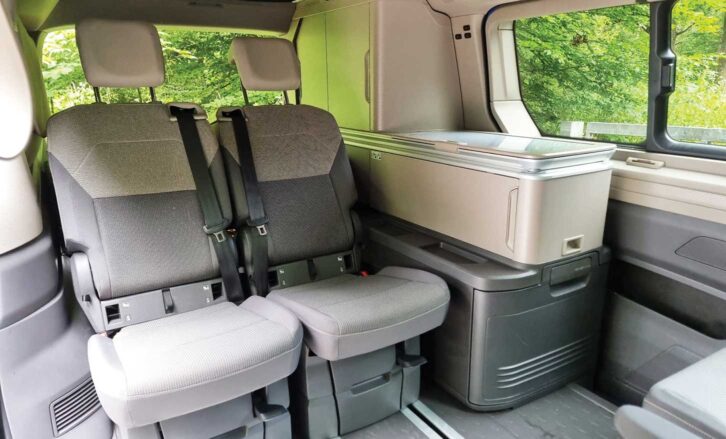
When it’s time to eat, there’s a table stashed under the bed extension at the rear. I thought that on a rainy day, you might wish it was accessible without having to walk around to the back of the camper.
But if the sun is shining, you can enjoy one of the new Volkswagen California Coast stand-out features – twin sliding doors. Opening both allows a cooling current of air.
Cooking in the Volkswagen California Coast
Keen cooks might be a bit frustrated with the kitchen, where workspace is pretty limited, and there’s just one burner. Plenty of other ’vans at this price have a twin-burner hob.
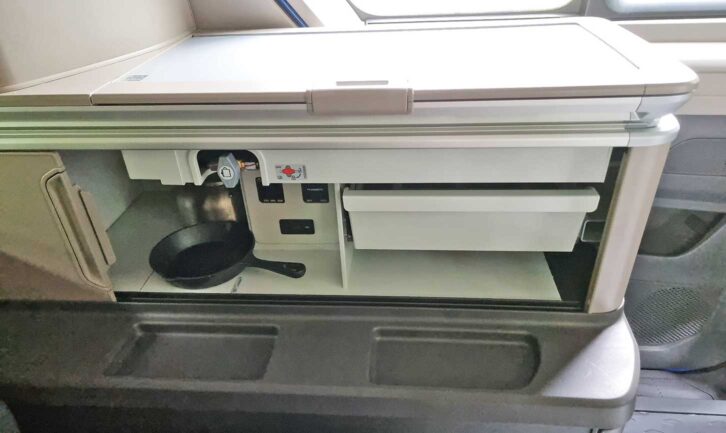
There is a small additional table that folds out, although the nearside door needs to be open to use it.
The campervan fridge is a decent size, with variable temperature settings. It’s below the hob by the nearside door, making it easy to grab a cold beer from inside or outside the vehicle.
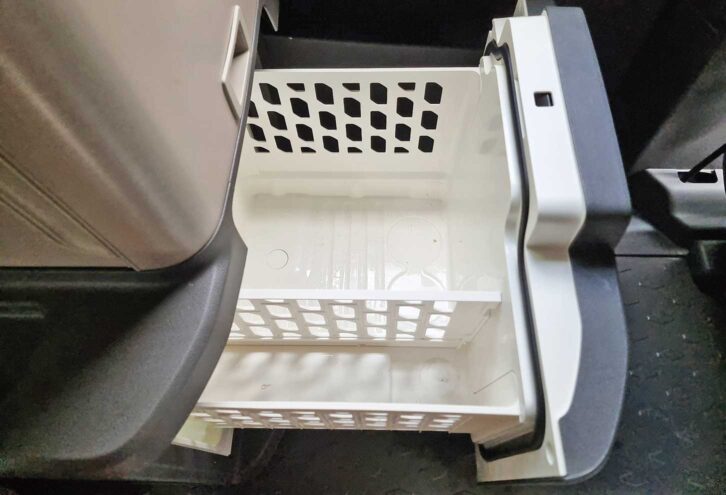
The washroom in the California Coast
Given the California’s compact size, it’s no great surprise that there’s no washroom. There’s no toilet either, although it would be easy enough to store a Porta-Potti if needed.
If you were wondering, “Does the campervan have a shower?”, you will be interested to know it is possible to rinse off using the external shower point at the tailgate, but it only provides cold water.
Sleeping in the Volkswagen California Coast
There’s room for four to sleep. The rear seats fold flat and the mattress folds out on top. The bed measures 198 x 108cm, so while not especially wide, it’s long enough for six-footers. It has a weight limit of 200kg. You can consider enhancing your sleeping experience with the best mattress topper for a VW campervan, too.
Raising the roof is done at the push of a button. This gives access to the roof bed, which also has a maximum weight of 200kg, and dimensions of 205.40 x 113.70cm. Take care when lowering the roof, however. Although in theory this is also at the press of a button, in practice it might need some help to ensure the fabric doesn’t stick out of the roof sides as it closes.
Storage in the Coast
Storage is always at a premium in this size of campervan, but Volkswagen has used the available space efficiently. There are pull-out trays underneath the seats, a zip-up compartment in the offside at the rear, and lockers located on the nearside.
Boot space varies, depending on the sliding seats. Moving them forward makes more room between the seats and tailgate, but leaves lots of legroom.
There’s no need to pack an awning; a wind-out awning comes as standard.
Alternatives to consider
For those who are interested in a Transporter-based VW, you could consider Bilbo’s Celex HL – it has a comfortable bed, good storage and a clever layout.
Alternatively, you could be tempted by a larger VW, in the shape of the Crafter-based Grand California 600, which I previously reviewed – it offers good headroom, a punchy engine and a comfortable bed.
Technical specification of the Volkswagen California Coast
- Price: £70,576
- Sleeps: 4
- Belts: 4
- Base vehicle: VW Multivan
- Engine: 2.0-litre 150hp turbodiesel with seven- speed DSG auto gearbox
- Length/width/height: 5.17/2.25/1.97m (16’10”/7’4”/6’5”)
- MTPLM: 2850kg
- MiRO: 2417kg
- Payload: 433kg
- Water (fresh/waste): 29/23 litres
- Leisure battery: 2 x 40Ah
- Gas: 1 x 2.75kg
- Contact: volkswagen-vans.co.uk
If you’ve enjoyed reading this article, why not get the latest news, reviews and features delivered direct to your door or inbox every month. Take advantage of our brilliant Practical Motorhome magazine SUBSCRIBERS’ OFFER and SIGN UP TO OUR NEWSLETTER for regular weekly updates on all things motorhome related.
Technical Specifications
| Berth | 4 |
| MiRO | 2417 kg |
| Payload | 433 kg |
| MTPLM | 2850 kg |
| Shipping Length | 5.17 m |
| Width | 2.25 m |
| Engine Size | 2000 cc |
